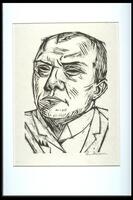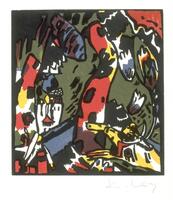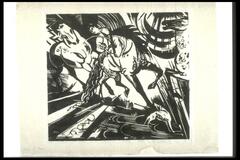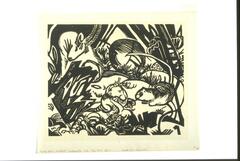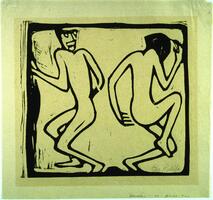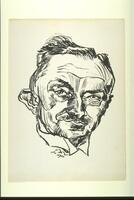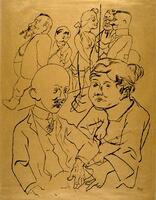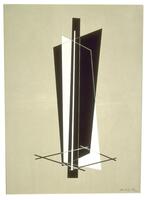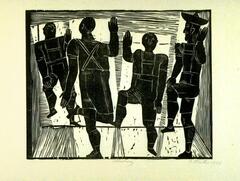F15 Cain - GERMAN 232 - Visions of Modernity in German Lit Around 1900
Expressionism
The turn of the twentieth century was an exciting time marked by the discovery of new, previously unsuspected worlds below the surface of everyday perception. Germany, Austria and Switzerland were at the forefront of literary, scientific and artistic innovation at that time. In psychology, Sigmund Freud’s work found explanations hidden in the depths of the unconscious. In the sciences, Röntgen’s 1895 discovery of the X-ray and Rutherford’s 1911 splitting of the atom revealed previously invisible physical realities. In politics, Marx and Engels proposed that labor and capital were the forces determining social change and the progress of history. This time of great optimism and scientific advance also witnessed the outbreak of the First World War, a violent and technological war that questioned the optimism about the continuing progress of humankind. Artists and writers responded to these new ideas in highly imaginative ways. Expressionist artists such as Franz Marc and Wasilly Kandinsky of the “Blaue Reiter” group believed their art revealed a “spiritual” dimension that could balance a society dominated by rationalism. Writers such Kafka, Brecht, Schnitzler and Kästner took their readers into these new worlds in their prose and poetry. In this course we will explore notions of hidden worlds revealed and how they were reflected in art, literature, film and political and scientific texts. We will read and analyze a variety of materials, including short stories, poems, plays and a graphic novel adaptation of the children’s story Emil und die Detektive. We will continue to improve our German proficiency including all the fundamental skills of speaking, listening, reading, writing and grammar. Special features of the class include a trip to the UMMA, guest lectures and creative writing. Taught in German.
Rate this Resource
AVG: 0 | Ratings: 0
& Author Notes
Creative Commons by-nc-sa (University of Michigan Museum of Art)Last Updated
April 4, 2020 2:20 p.m.Report
Reporting Policy
